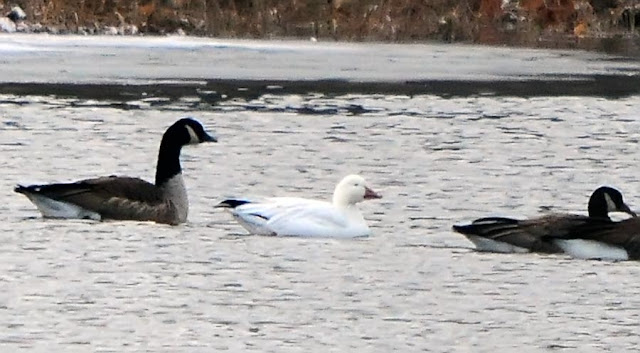December. I am desperate for birds. The woods have been quiet and skies empty. I'll soon be going into serious withdrawal. So I drove to Turner's Falls, MA, to check out the power canal as James Smith of Pioneer Birding had reported sightings of Cackling Geese and Iceland Gulls.
It was mid afternoon, the sun much lower in the sky than I had foreseen. Several groups of Common Goldeneyes were on the water and I got some photos before they had a chance to turn tails and swim toward the opposite shore as is they are prone to do when seeing anyone approaching them.
Male Common Goldeneye
Male flying
Flock of three females and one male
On the water there were several hundred Canada Geese, but I was lucky: Shortly after my arrival when passing the first group of Canada Geese I saw a bird near the periphery which was strikingly smaller than the others. I was able to get a shot but the waning light resulted in a picture of poor quality. The petite size and build convinced me that this was a Cackling Goose but I stand corrected:
Thomas Wetmore pointed out that the photo probably shows an Atlantic subspecies of a Canada Goose, not a Cackling Goose. Cackling Geese are small still, show a stubby bill, short neck and blocky head with large cheek patch.
Far off shore were several gulls, mostly Herring Gulls, several Great Black-backed Gulls and a couple of lst cycle Iceland Gulls.
This photo shows an Iceland Gull standing on ice surrounded by Herring Gulls and GBBB juveniles which I took at Turner's Fall this past February. (More photos on my
website, bottom of page.)
I am going to give it another shot next week. Timing is always finding the right balance: too early and the light is good, but the birds have not yet flown in to roost; too late and there is too little light.
November morning, Connecticut River, Hinsdale, NH
Thanks for stopping by. Please leave a comment.


















































